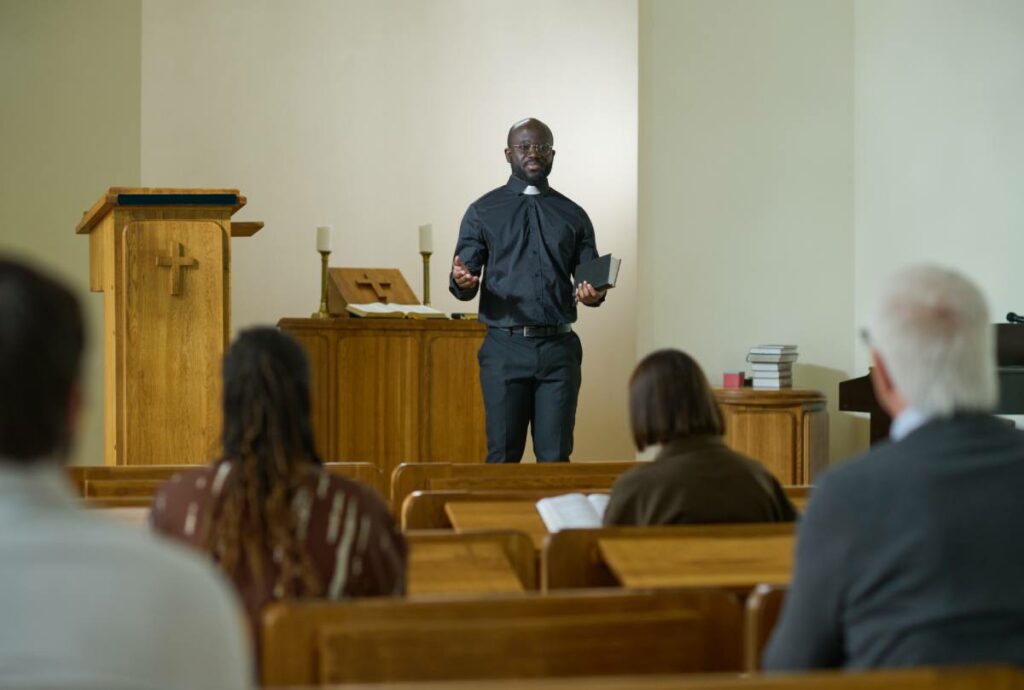What are the trends in how sermons are being delivered in the 2020s? This is a question that many people are asking and there is no easy answer. Some pastors choose to deliver their sermons online, while others stick to traditional methods. Both approaches have pros and cons, and it ultimately comes down to what works best for each pastor and congregation. We will take a closer look at some of the trends we have seen in sermon delivery in the 2020s.

Sermons Have Become More Informal And Interactive
For centuries, preaching has been one of the most important ways to communicate the message of Christianity. Over time, preaching styles have evolved to become more informal and interactive. This is mainly due to the changing needs of audiences. In the past, people were more likely to listen to a sermon passively. Today, however, people are looking for a more engaging experience. They want to be able to ask questions and receive feedback from the preacher.
The increased use of technology has driven this change. People are now used to interacting with screens and receiving information in short bursts. As a result, preachers have had to adapt their style to keep people engaged. Preaching is often done through video sermons, social media posts, and podcasts. By using these more interactive formats, preachers can reach a wider audience and significantly impact their listeners.
Use Of Multimedia Has Increased Significantly
The increased use of multimedia in sermons has been one of the most significant changes in recent years. In the past, preachers typically used a Bible and their voices to deliver a speech. Today, however, they often incorporate videos, PowerPoint presentations, and even live music into their sermons. This is because people are now used to consuming information in multiple formats.
Preachers can more effectively communicate their message by using multimedia. They can also make their sermons more engaging and exciting. However, it is essential to use multimedia judiciously. Too much can distract and take away from the core message of the address.
Sermons Are Now Shorter In Length, Averaging Around 30 Minutes
One of the most notable changes in sermon delivery has been the length of sermons. In the past, it was not uncommon for a preacher to speak for an hour or more. Today, however, addresses are typically shorter, averaging around 30 minutes. This is because people’s attention spans have decreased significantly in recent years.
The increased use of technology has also influenced the shorter length of sermons. With so much information available at our fingertips, it can be challenging to keep people’s attention focused on one thing for an extended period. As a result, preachers have had to adapt their style to make their sermons more concise and to the point.
Topics Are More Relevant To The Lives Of Modern Christians
The topics of sermons have also changed in recent years. In the past, sermons were often focused on theological concepts that were not always relevant to the lives of modern Christians. Today, however, many preachers are choosing to focus on topics that are more relevant to the lives of their congregants.
This change is because people now seek guidance on how to live as Christians. They want to know how they can apply biblical principles to modern problems such as addiction, divorce, and financial difficulties. Preachers can provide much-needed guidance to their congregants by focusing on these topics.
There Is A Greater Focus On Social Justice Issues
In addition to focusing on more relevant topics, many preachers have also begun to focus on social justice issues. This is because there is a growing awareness of the need for Christians to stand up for the oppressed and fight against injustice.
By bringing attention to social justice issues, preachers can inspire their congregants to take action. They can also provide them with the necessary resources to make a difference in their communities.
Churches Are Reaching Out To Younger Generations By Using Technology And Social Media
Finally, churches reach out to younger generations using technology and social media. In the past, churches were often seen as being out of touch with the needs of young people. Today, however, they are using technology and social media to connect with them.
These platforms allow churches to reach a wider audience and share their message with more people. They can also engage with young people in a way that is relevant to their lives.
Conclusion
Overall, the changes we have seen in sermons over the past few years have been very positive. Preachers are now using more interactive and engaging formats to deliver their messages. They are also focusing on topics that are more relevant to the lives of modern Christians. Additionally, churches are using technology and social media to reach out to younger generations. These changes are helping to make sermons more impactful and relevant to the needs of today’s Christians.



